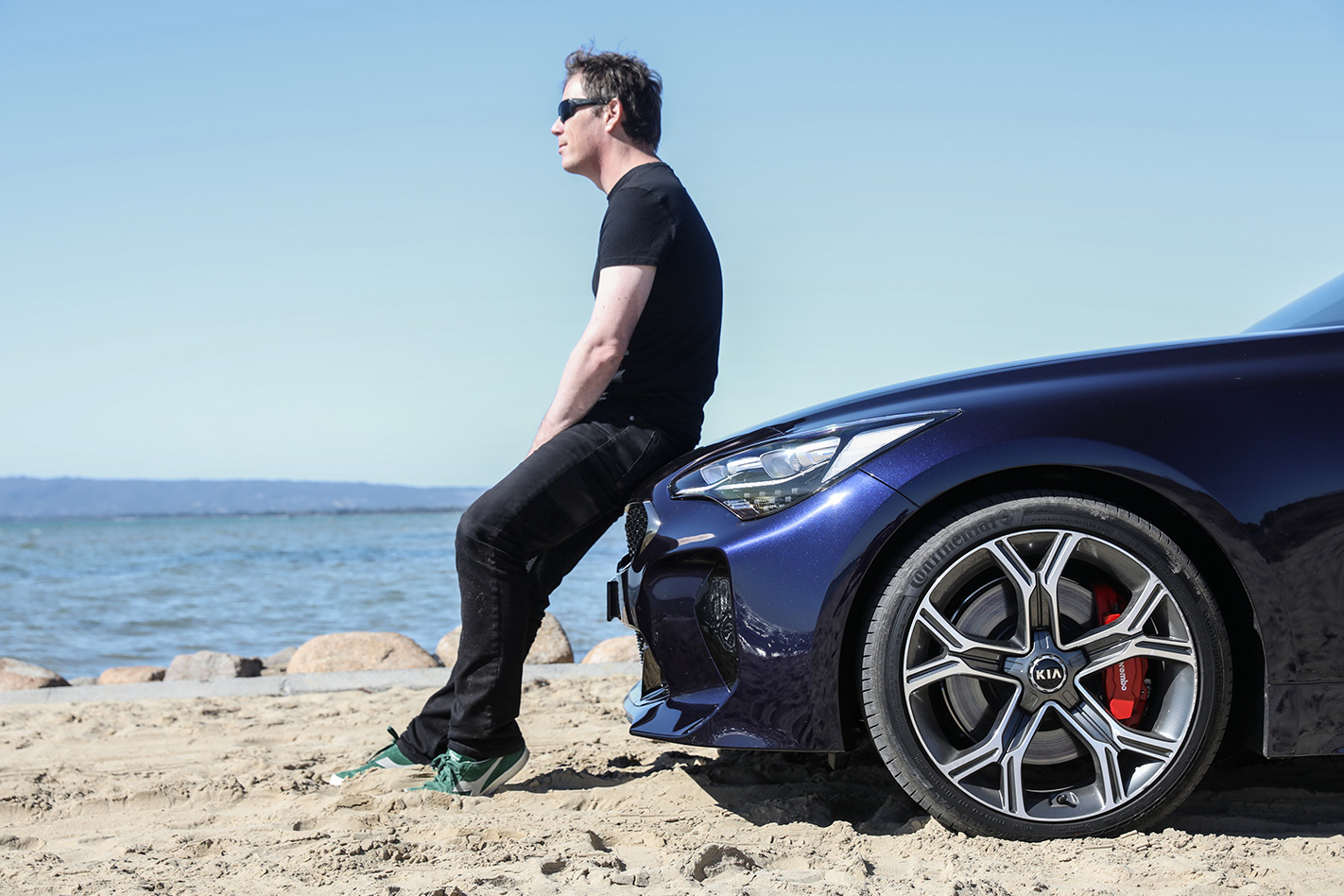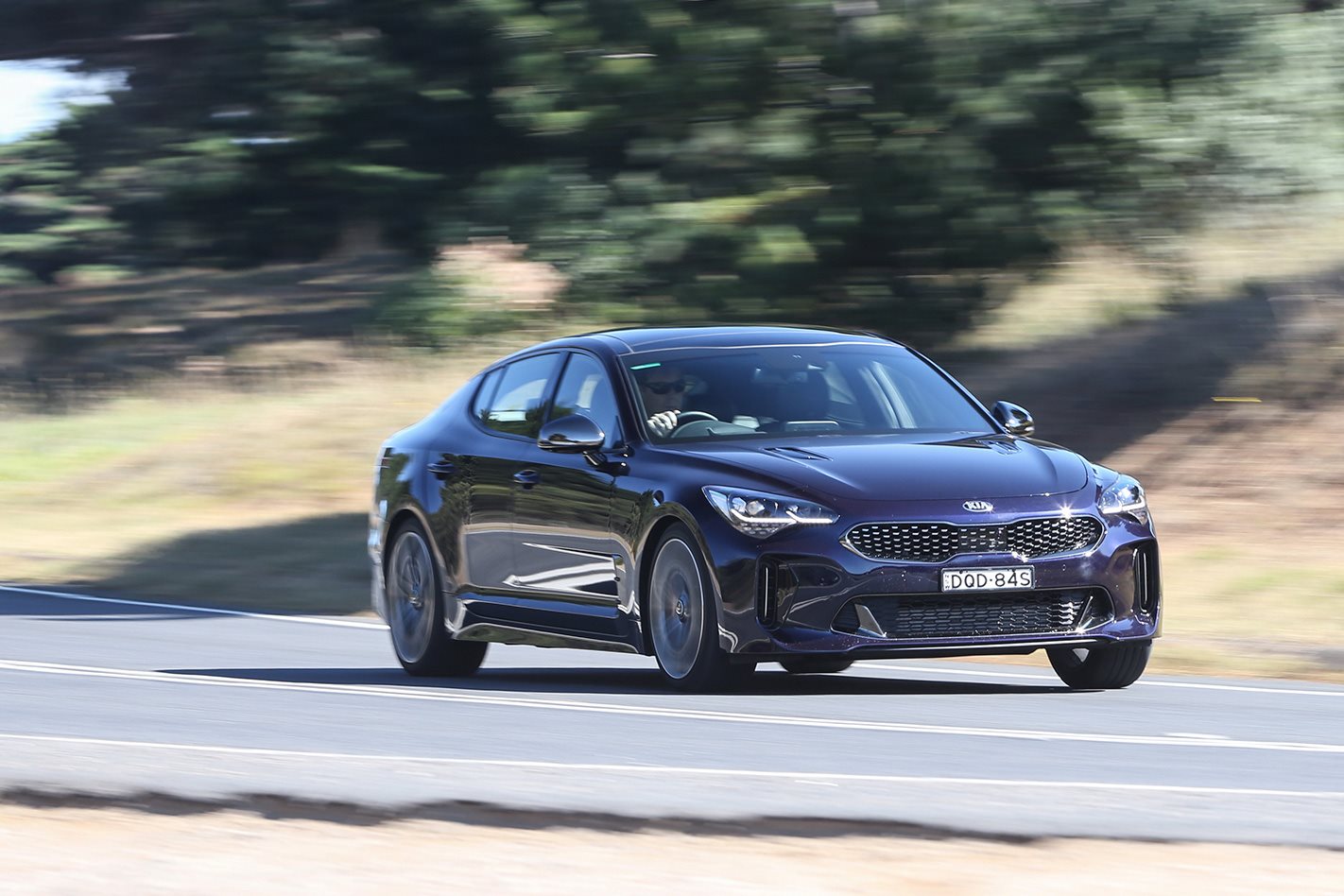
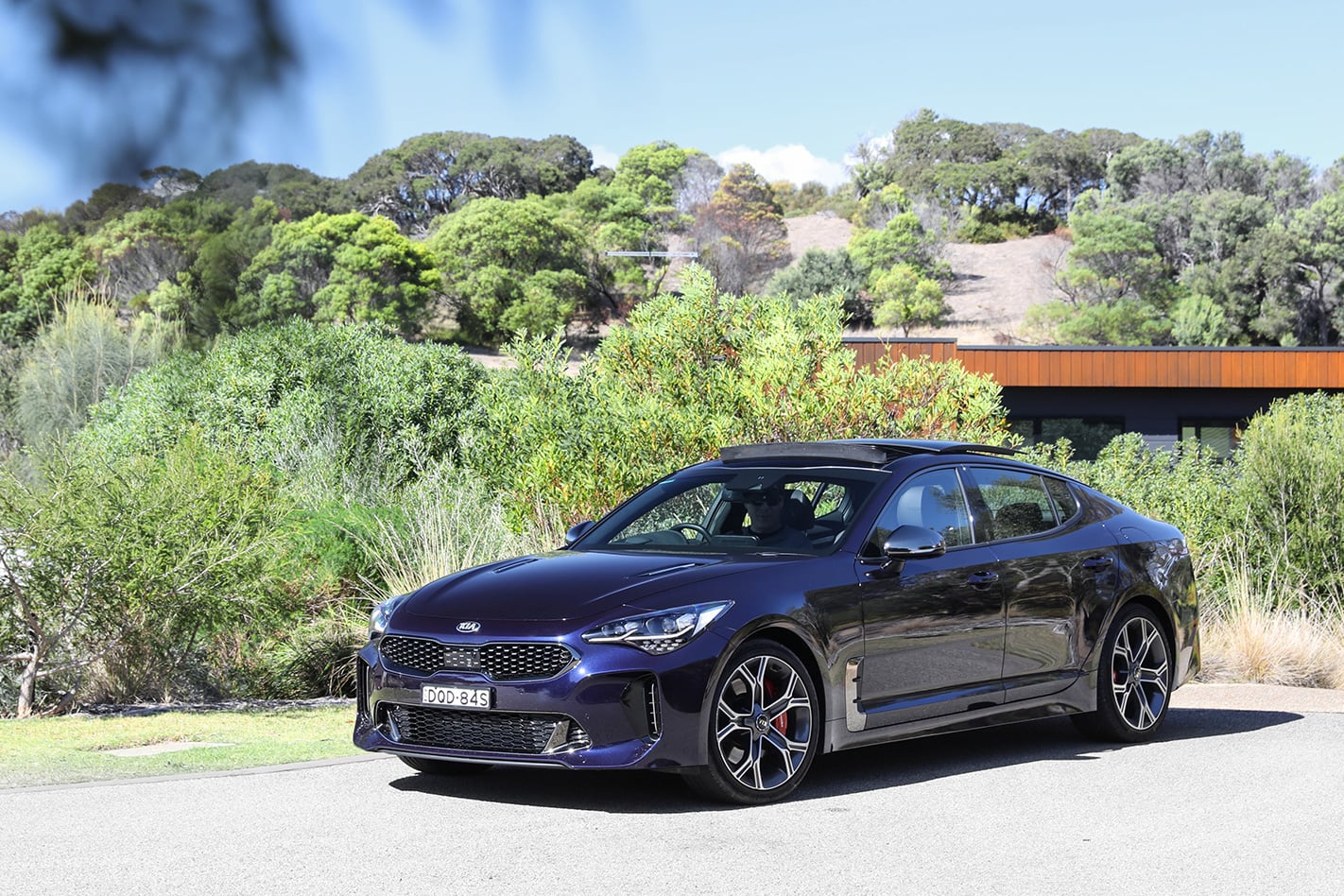
Slowly she was coming around to the notion of adventure slightly more ambitious than a gravel driveway, but not anything as hardcore as growing a beard or killing your dinner with the back of a spade. Then at the last minute, that plan fell to pieces and I ended up in a Kia. Not that I’m complaining. How could you when you have a 272kW rear driver with a great stereo, tyres with actual tread still on them and a scheduled six months to enjoy it in? Silver linings and all that.
The more observant amongst you might have clocked that we’ve already given V6 Stingers the nod in a couple of Wheels comparisons, and I’ve got a bit of a soft spot for these big-hearted bruisers. This one wears no options other than $695 of Deep Chroma Blue paintwork, which has a subtle purplish pop in bright sunlight.
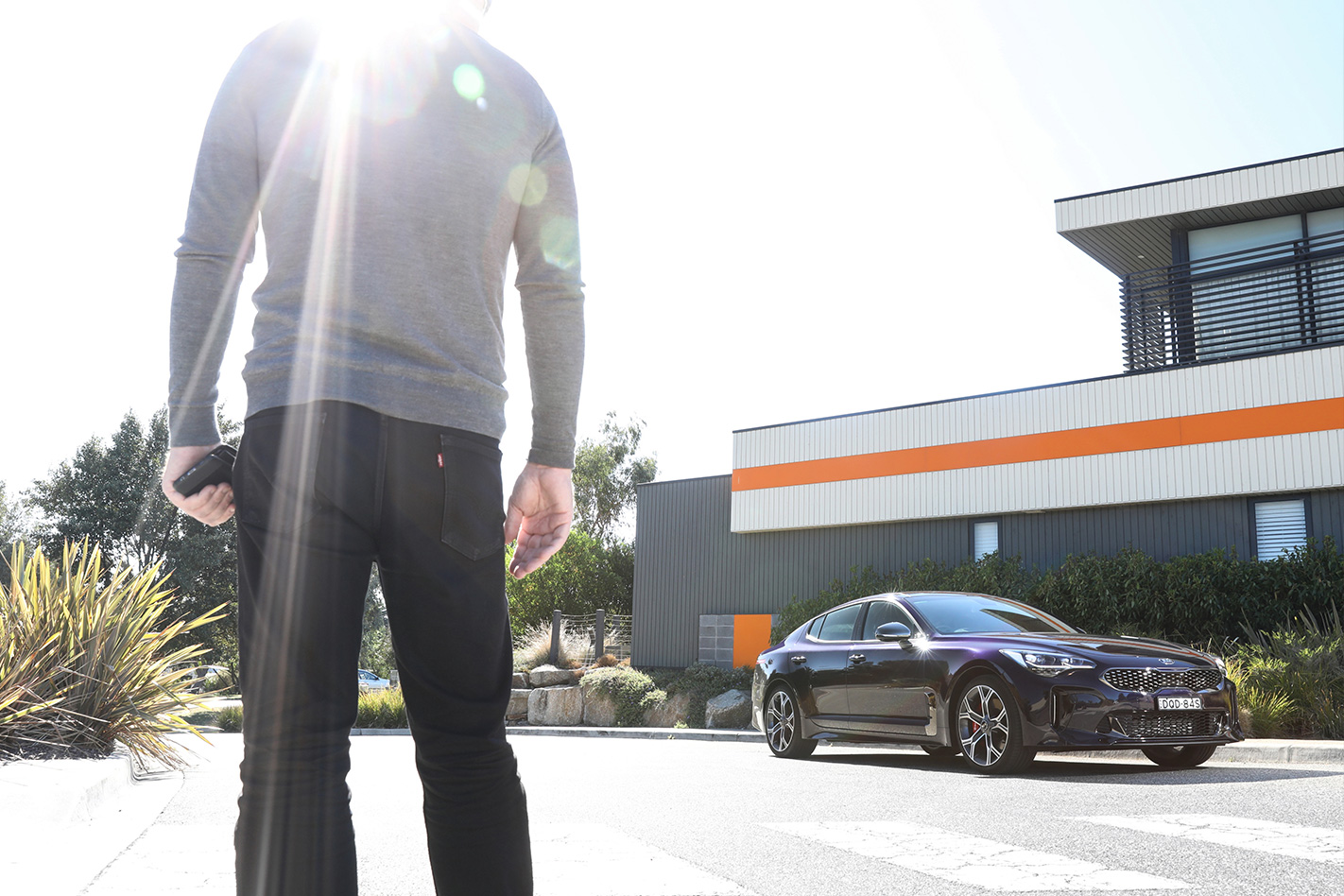
It still comes winging in at around five grand under the luxury car tax threshold, so makes all kinds of sense for the private buyer who’s never quite recovered from the demise of the Falcon G6E. Factor in the seven-year warranty and huge standard equipment list and it’s easy to see why, despite supply limitations, the Kia GT is so popular with Aussie customers.
One of the recurring grumbles from the comparison tests was that the Stinger was a bit mute, so I was excitedly informed that this example had been retrofitted with the new bi-modal sports exhaust, designed by Melbourne-based manufacturer Lumens. It took about four seconds to decide that I hated the exhaust, and I drive mostly in Eco mode in order to silence its intrusive racket.
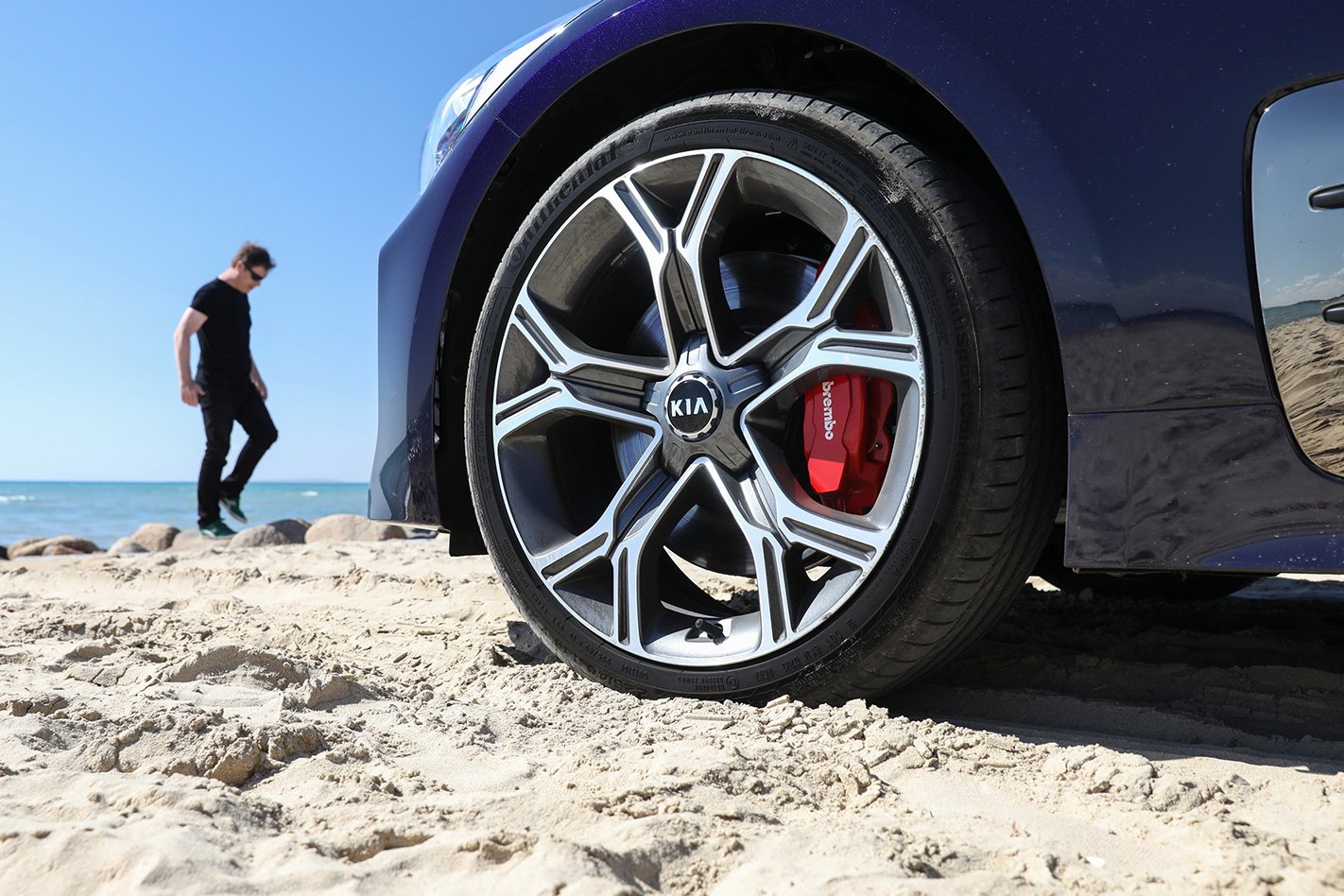
Granted, it does sound good when giving the car a prod in Sport mode, and introduces a bit of much-needed musicality to the top end, but it probably requires a little more calibration on when it ought to butt out.
A downside of driving in Eco on freeways is that the otherwise excellent adaptive cruise control becomes a bit of a liability. If a slower vehicle in front pulls over, the Stinger will accelerate to its assigned speed so slowly that you’ll be checking the rear view mirrors for fear of being mown down by a jinky tectonic plate or a darted sloth.
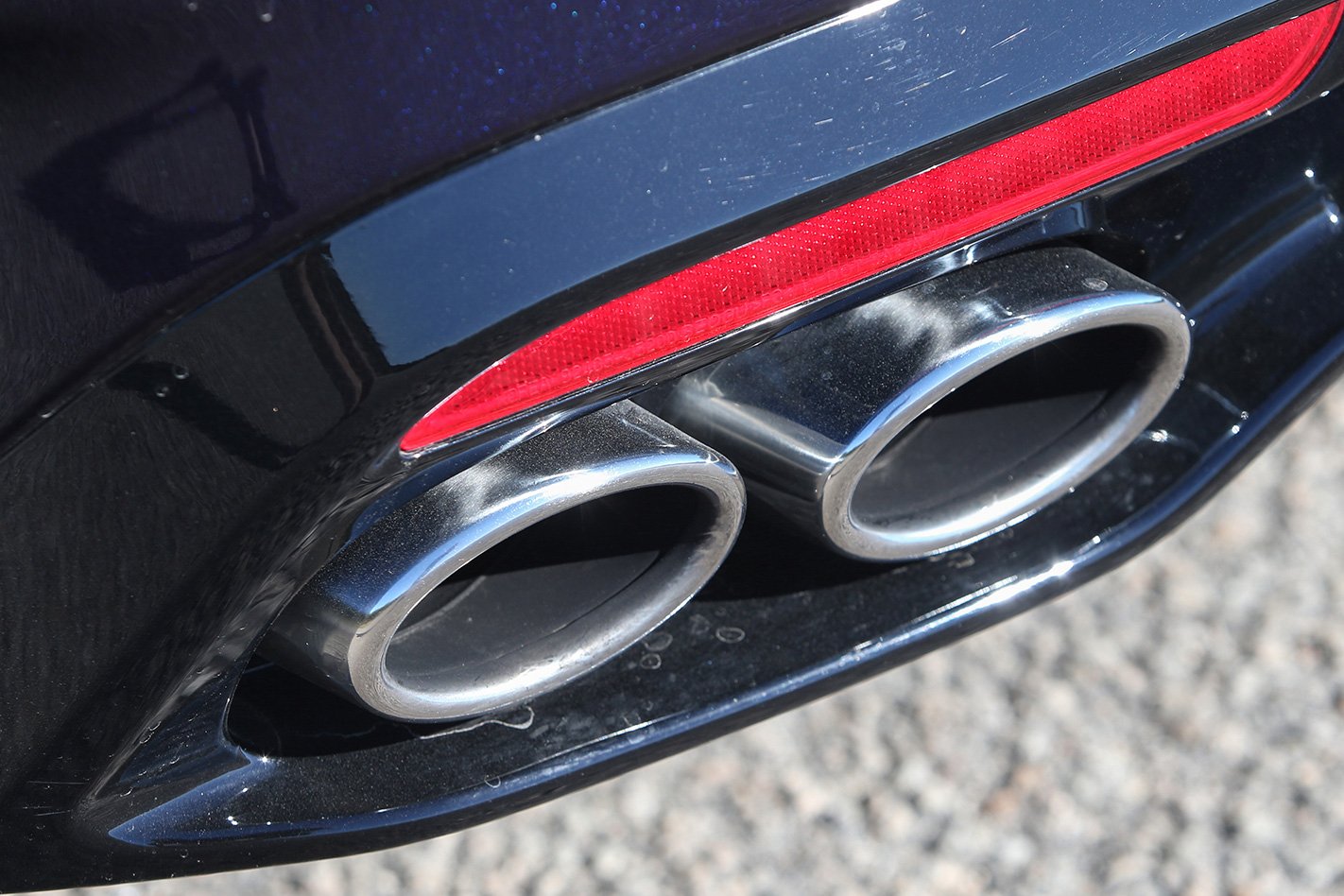
The other downside of driving in Eco is that while the exhaust is quieter, the transmission’s insistence on holding subsonic gears means that it sets the speaker grilles rattling as the engine labours uphill. There’s a Smart mode and a Custom mode with which to experiment so I hope to be able to find a workaround in due course.
Otherwise, the Kia makes a strong first impression. Having seen how easily a Stinger cremated a set of tyres during performance testing a few months ago, I’m deliberately being very careful with the soft Continental boots. That rubber turned to mouse fur after a few sideways passes for the camera, so the otherwise tempting stability control button has, thus far, remained unprodded. I’m trying to drive it ‘normally’. That said, the definition of normal may change over time.
Update 2
Before you ask, the Stinger is still being driven around in Eco mode in a bid to silence the optional sports exhaust. I thought I’d give it a chance and try another mode but it’s only really bearable when drowned out by the stereo. One upside to schlepping about in the Kia’s most relaxed mode is that the last tank of fuel was consumed at the unexpectedly frugal rate of 9.3L/100km.
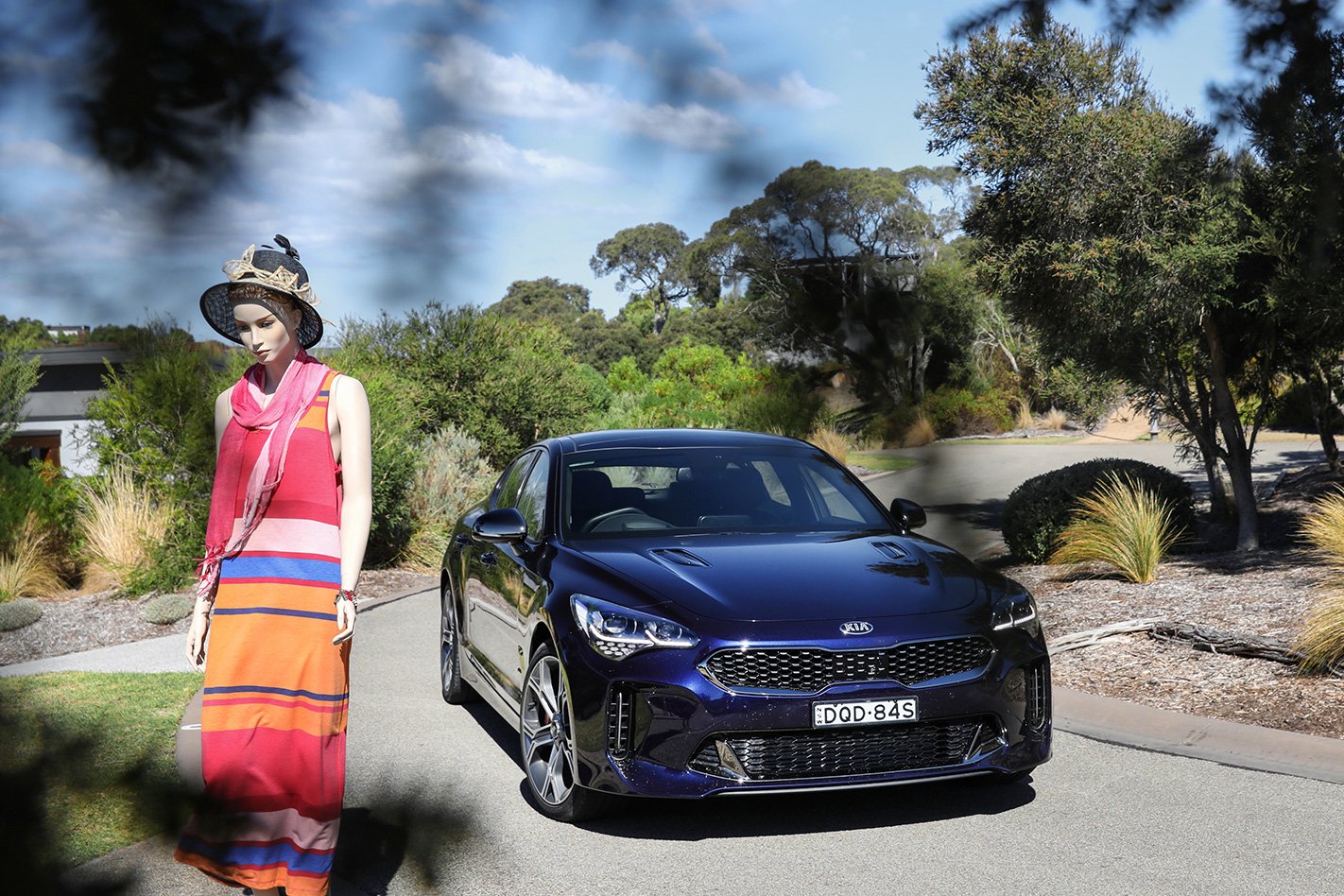
The downside of bypassing the exhaust’s bi-modal mode is that the Stinger’s now more silent than the Red October and something is not quite right at the stern. There’s a persistent noise that I haven’t quite got to the bottom of, but it sounds as if the tailgate latch isn’t quite engaging properly, setting up a constant rattle on anything other than baby’s-bottom-smooth roads.
Of which there are precisely none in my vicinity.
Other than that, the news is all good. Although we tend to think of the Stinger as something at the sportier end of the class, it makes a beautifully relaxed GT car if you keep the suspension in its comfort mode and just make the most of the active cruise control and the Gold Class-proportioned front seats with their heating and cooling functions.
On the daily commute, the biggest challenge is usually staying awake. This languorous side to the Kia’s personality only makes the full 272kW, when deployed, even more startling.

In the wet, you need to be ready for the tail to have a bit of a slither, even with the stability control resolutely retained. The electronics are casual, only really intervening if it thinks you’re intent on swapping ends. Punch it away from the lights on a damp road and it’ll buck and yaw quite entertainingly, but it’s something that’ll raise eyebrows if you’re not ready for it.
Once you’re used to it you can either pre-empt it with a feather of the throttle or just wade in and ride it out.
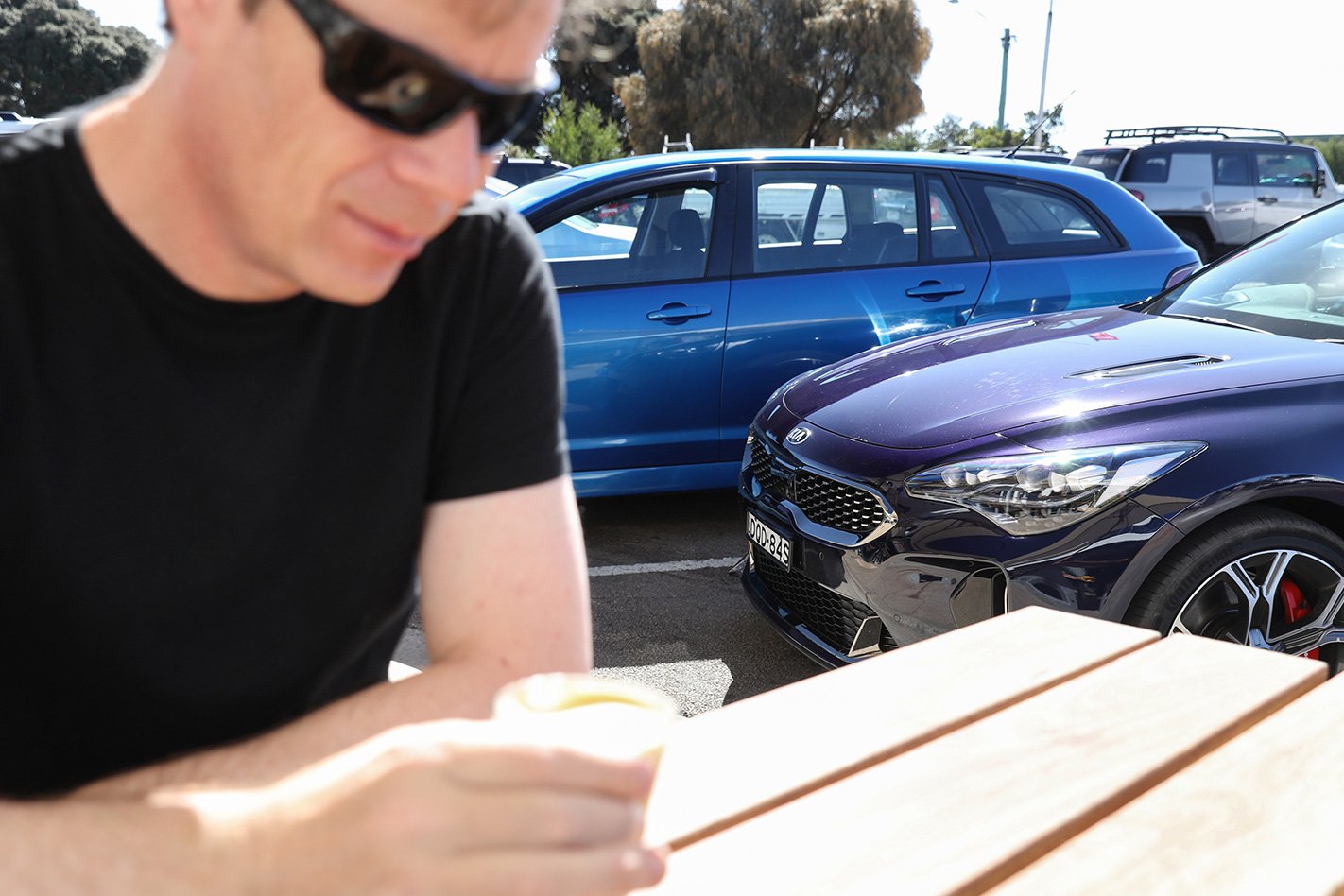
The tyres look to be retaining a decent semblance of tread on them, despite the lax stability control. While performing some cornering duties for our snapper, it was noted that the fronts almost looked as if they were rolling off the rims. The pressures were all correct, and this merely lends weight to my suspicion that these Continental ContiSport Contact 5 tyres might be just a tad doughy for the power and weight of the Stinger.
For the Stinger’s Aussie launch on the Wakefield Park circuit, the Contis mysteriously disappeared and were replaced by Michelin Pilot Sport 4 S rubber. That speaks volumes.
Update 3
I have an admission to make. Having driven the Stinger GT for more than two months, I had yet to activate launch control and had a gnawing suspicion that my man card would be revoked if I ever mentioned this in the office. Upon further reflection, I realise that I don’t actually have a man card, so perhaps demolishing something rapid at the lights could render me eligible for some sort of standby list.
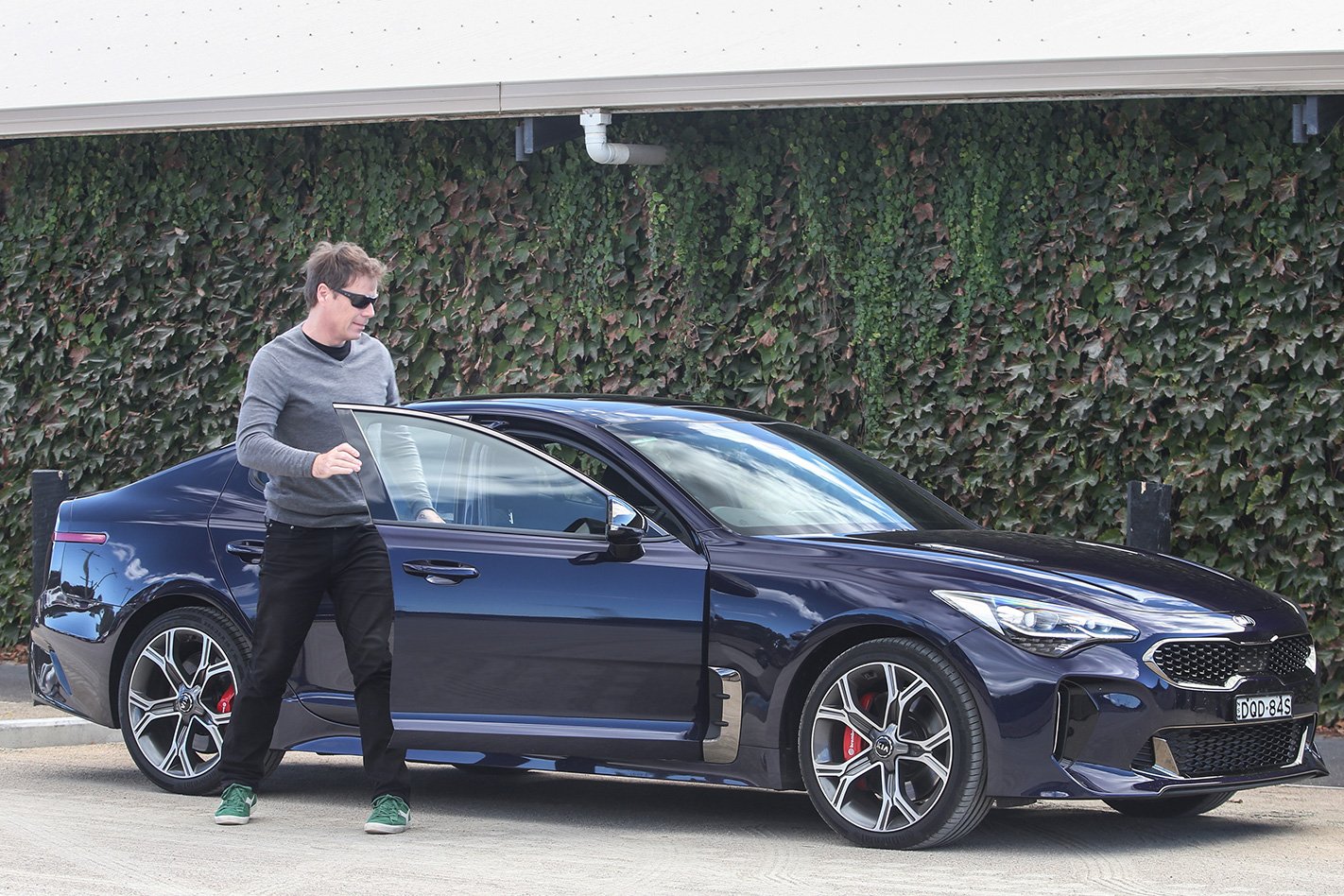
It’s not that I was nervous about the mechanics of launching the Stinger. I’d done it many times at the drag strip with previous Stinger test cars. It’s just that when you run a long termer, you tend to baby it a bit, to treat it as if it’s your own. I haven’t cleaned the wheels on the thing yet, so I haven’t totally gone down that tragic route, but you get the point. It doesn’t get the snot beaten out of it like a car on a one-hour assessment drive.
Anyway, to cut to the chase, I was waiting for the perfect opportunity to see if the Kia was as brisk off the mark as I remembered. It came when I found myself at some local lights next to a guy who lives a few doors down the road. He seems nice enough, but he lives just far enough away so that he merits the nod rather than any speaking per se, and he drives a Mercedes-AMG CLA 45.
Anoraks will know that this car is 0.6 seconds quicker to 100km/h than the Stinger GT (4.3 vs 4.9s claimed) thanks to the advantage of all-wheel drive, more power and less weight. No point shooting fish in barrels and all that.
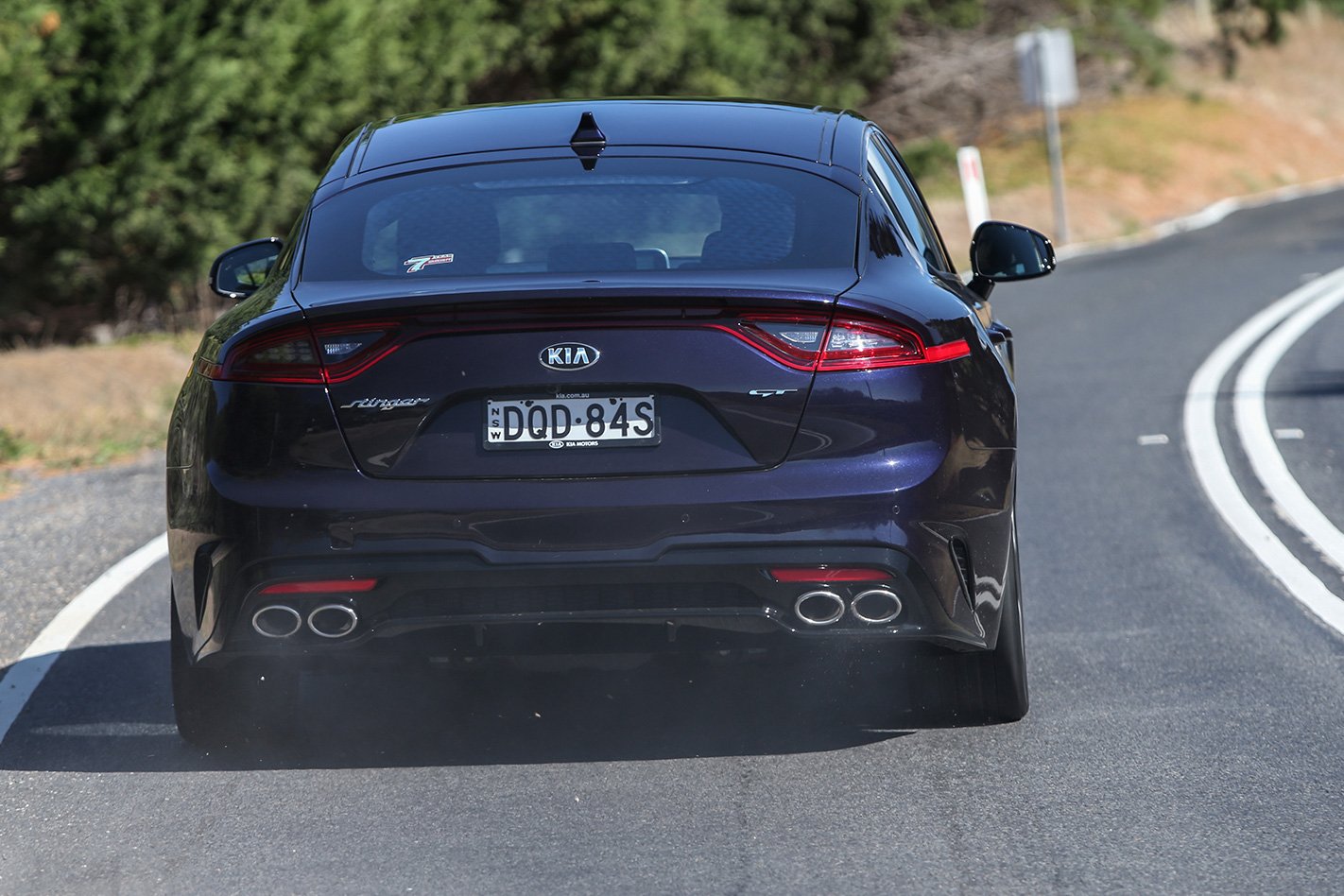
I was fairly confident that, given the element of surprise, I could destroy him. Studiously ignoring his attempt at a cheery wave, I surreptitiously fingered the stability control off, and gave the mode dial a couple of sneaky clockwise jabs into Sport. At this point, my plan started to come apart at the seams.

Upon arriving in Sport mode, the exhaust note dropped a couple of octaves at idle, which was heard by old mate. I heard his engine note subtly pitch up as he primed for green. I was still confident, because I was certain he’d never give the car he was paying $409 a week for (I looked it up) a merciless flogging off the mark.
And then he did. And I lost. It didn’t really help that in my anxiety to go, I’d not quite primed launch control properly, but I think he must have been hugely entertained by the sight of me sitting in my own blue cloud of ineptitude. In other news, I don’t like beer and I post cat pictures on Instagram.
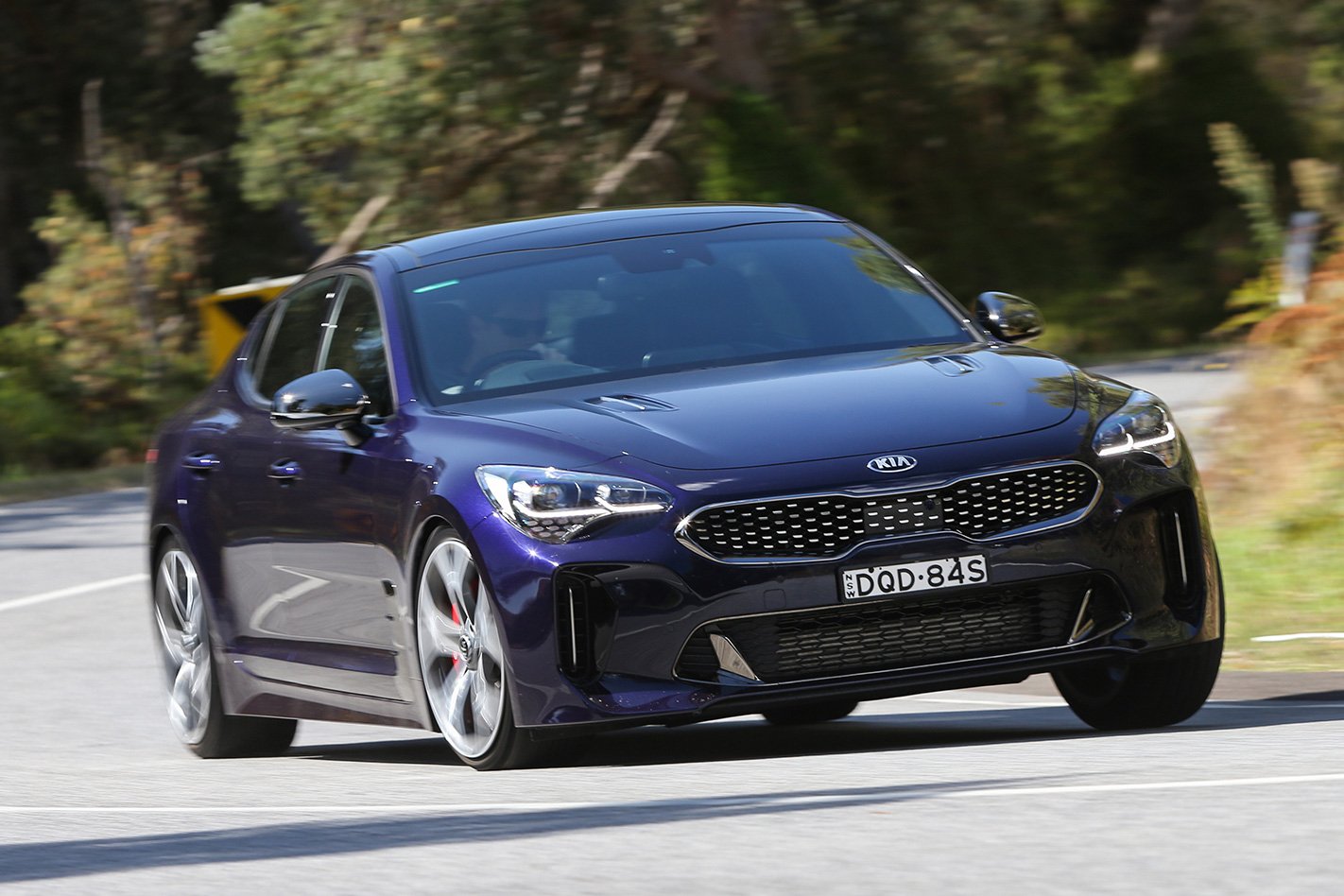
Update 4
Generosity, it has to be said, isn’t one of my virtues. Give me a ‘share bag’ of chips and my aim is to demolish the lot before anyone sniffs that heady tang of barbecue, wheat gluten and maltodextrin. This month, however, I have been sharing the Stinger love, spreading the good word of the gospel according to Peter Schreyer.
Of course, the more cynical amongst you will probably think it’s because I’ve had a better offer, something a bit sleeker and shapelier than the Kia’s coke-bottle curves, but I drove an Infiniti QX80, which blows a blimp-hangar-sized hole in that theory.

Keen to hear the opinion of others on the GT, I was slightly crestfallen when the guys at Street Machine thought that the exhaust, which has caused me no end of consternation, sounded great.
On that note, I had the opportunity to listen to a Stinger V6 with an aftermarket Tubi system fitted to it. Although exorbitant at $9K, it did sound way more characterful at idle and its four-mode control unit could also be set to produce AMG-like pops and crackles on overrun.
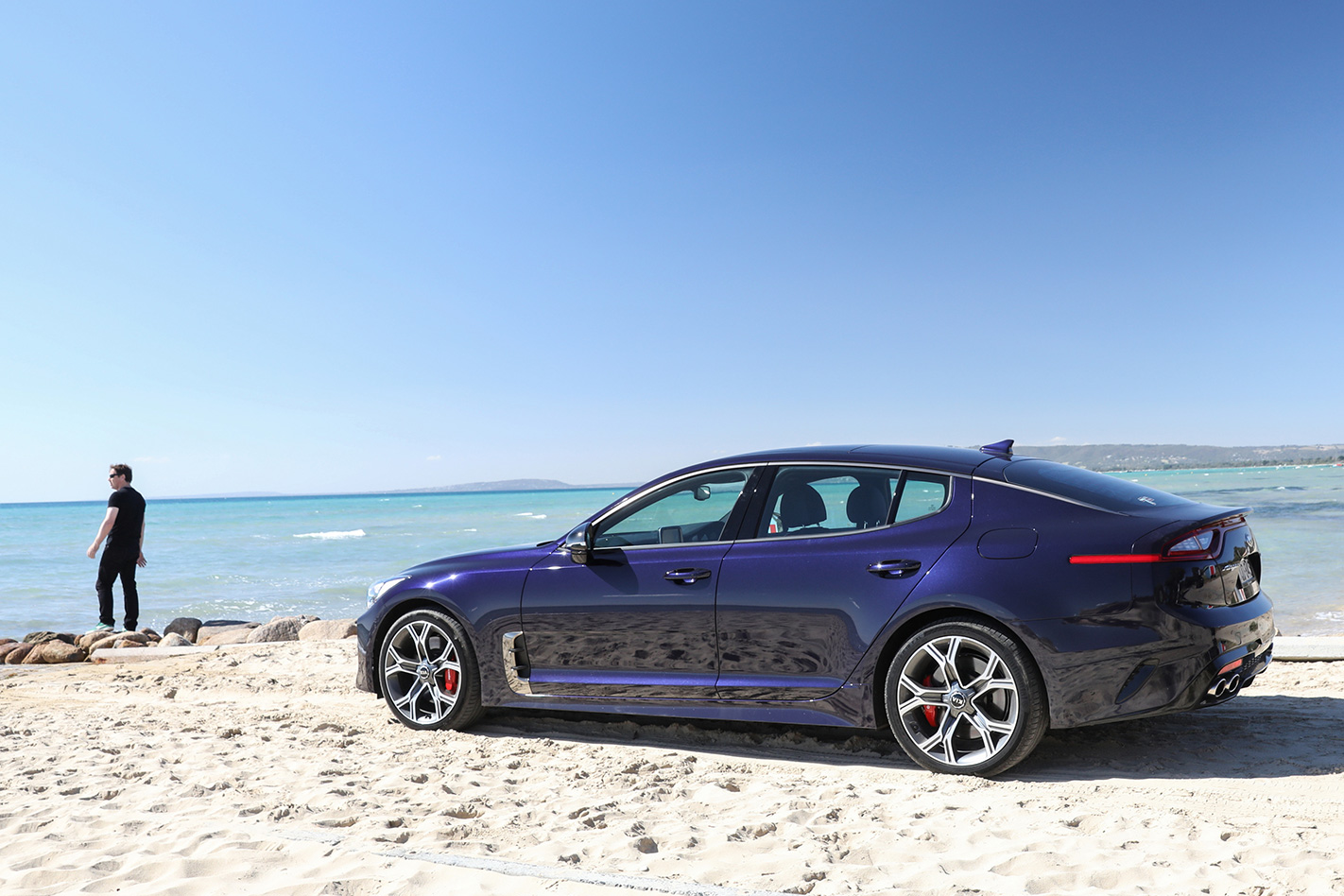
David Bonnici got hold of the Stinger keys during this month’s five-car SUV test and loved the GT’s poke but also enjoyed the fact that, like the best Aussie-built Falcons and Commodores, it could cool its heels when necessary.
I did feel some slight guilt at handing him the keys on a Monday morning after I’d driven the car on a massive high country dirt-road jaunt the day before; the Kia’s bodywork looking filthier than Charlie Sheen’s browser history. It was a great drive, though, the GT’s notoriously relaxed stability control system allowing a few lazy low-speed slides on the loose surface before common sense (and the realisation that this was somebody else’s 60 grand vehicle) intervened.

There are still some small details that irk me, though. I dislike the fact that the drive mode selector defaults back to Comfort – a setting I never use – if you switch the car off in Sport mode. The adaptive cruise control also has odd moments where it gets on the picks alarmingly late when you’re approaching stationary traffic, even when the radar’s switched to its longest range setting. There’s a host of minor imperfections that could all be cleaned up come facelift time if Kia had the foresight to consult owners.
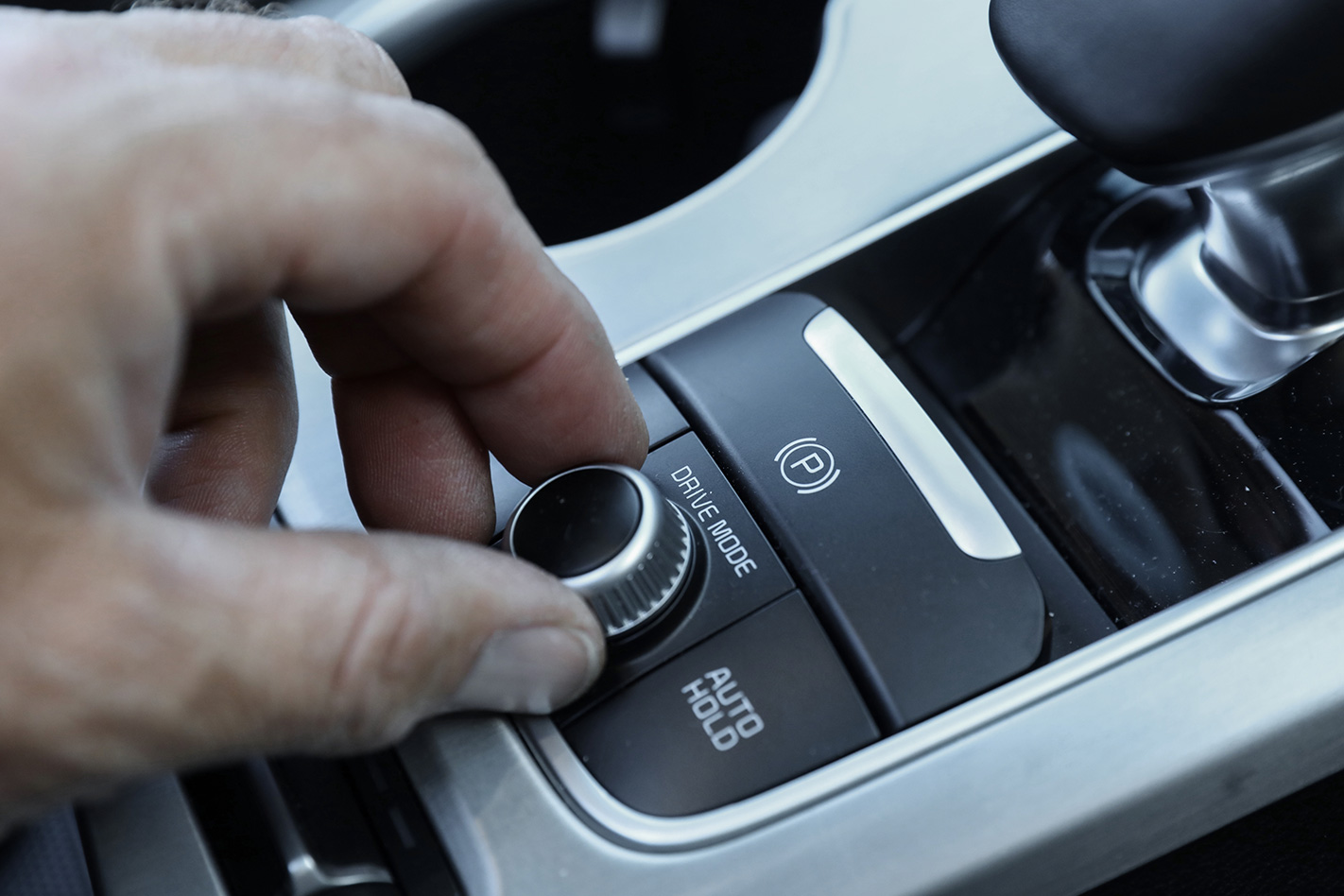
That channel of communication would benefit the development of the Stinger. It’s hugely endearing but still feels like a work in progress, something that needs a little more polish to really shine. Even with its flaws, it earns an easy recommendation, though. You don’t need to be too generous to afford it that.
Update 5
The law of diminishing returns is something a Kia Stinger GT owner soon becomes intimately acquainted with. I was minded of this fact on a recent drive of Mercedes-AMG’s ballistic C63 S in Germany. It’s a mightily impressive thing, but that 375kW sedan will set you back about $165K. Each kilowatt would therefore cost you $440. Compare that to this 272kW Stinger where one kilowatt is priced at pretty much half that: a bargain basement $221. The Civic Type-R, recent winner of sister title MOTOR’s Bang For Your Bucks, will set you back a sniff more at $223/kW. Even a Suzuki Swift Sport’s nags are pricier at $247 a pop.
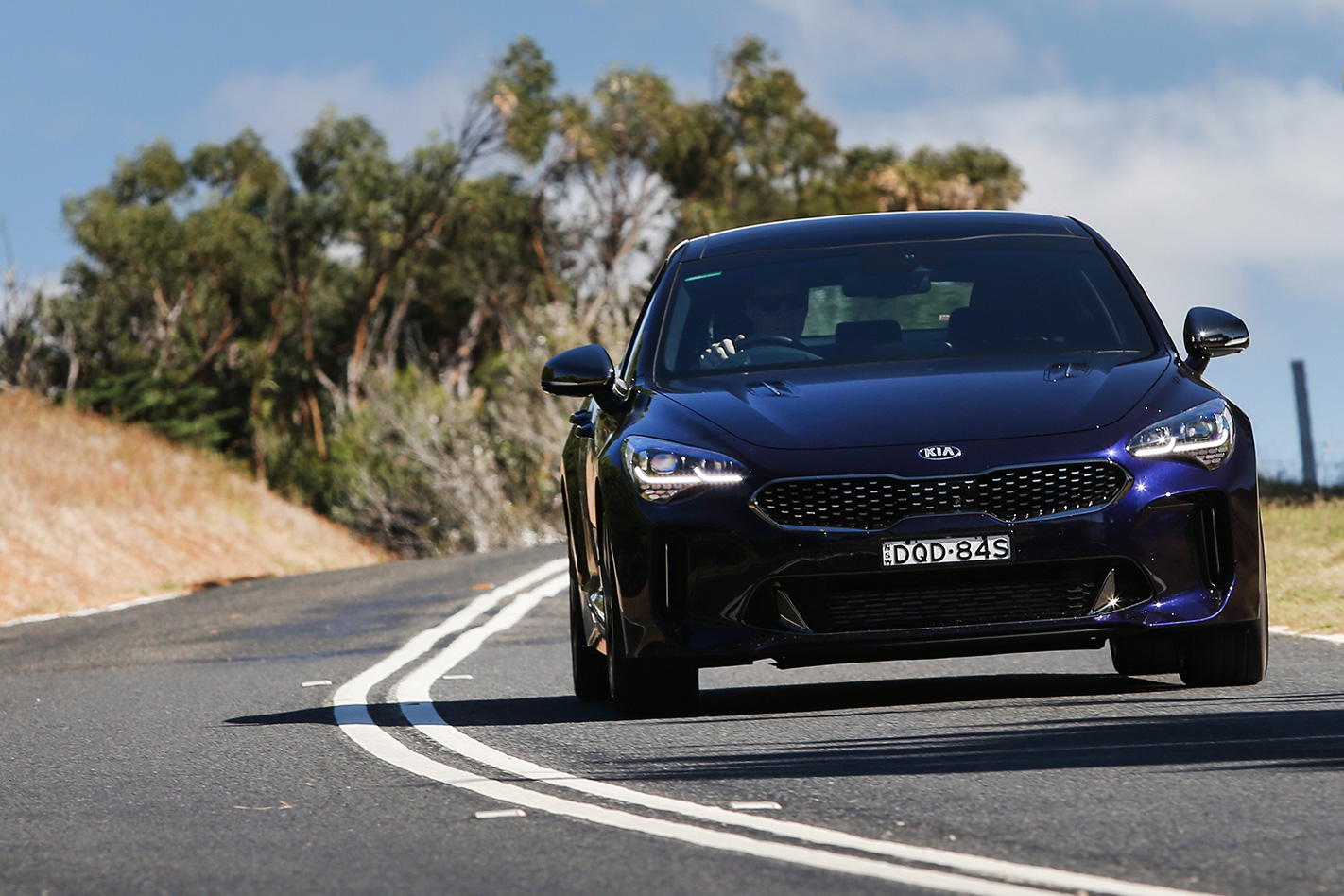
Should you delve a little further down the Stinger V6 line up, the equation becomes even sweeter, the $48,990 330S delivering sterling value at $180 per kilowatt. This seems to represent the most attractive 200kW+ performance bargain available to Aussie buyers, but does piling it high and selling it cheap necessarily make it a good buy or should you fork out for the pricier GT?

The answer to this question, like so many others, is ‘it depends’. The narrower 225mm-wide rear tyres of the 330S means it can’t get its power to the bitumen quite like the 255mm-shod GT, blunting its pace off the line. The steel-sprung 330S also lacks the GT’s adaptive dampers, although opinion is divided on whether the adaptive units are blessing or blunder. For what it’s worth, I prefer the passive damper set-up.
The optimum solution could well be a model running the passive suspension tune with the wider rear tyres. Such a car does exist. The Stinger 330Si is priced at $55,990 but hardly anybody buys this apparent ‘Goldilocks’ model, largely because the GT ladles on a load of extra kit for a mere $4K premium. Aside from the adaptive dampers, it gets a 360-degree camera, blind-spot detection, rear cross-traffic alert, automatic high beam, headlights that turn as you do, a powered front passenger seat, adaptive bolsters and memory function for the driver’s seat, heating and cooling for both front chairs, dark chrome exterior bits, a powered sunroof, a head-up display, a 7.0-inch LCD supervision cluster, wireless phone charging, aluminium interior finishes, and a 15-speaker Harman Kardon stereo, among other things.
There are a few items in that list that, a few months in, I wouldn’t really want to be without. What’s more, the Stinger GT offers all that gear for 80 percent of the price of one optional AMG carbon-ceramic brake disc. It’s hard to argue with a deal like that. Diminishing returns be damned.
Update 6
Joni Mitchell, it’s reasonable to assume, probably wasn’t thinking about returning her Kia long termer when she wrote ‘Big Yellow Taxi’. Nevertheless, that line “don’t it always seem to go, that you don’t know what you’ve got ’til it’s gone” seems to have been my earworm ever since the Stinger went back.
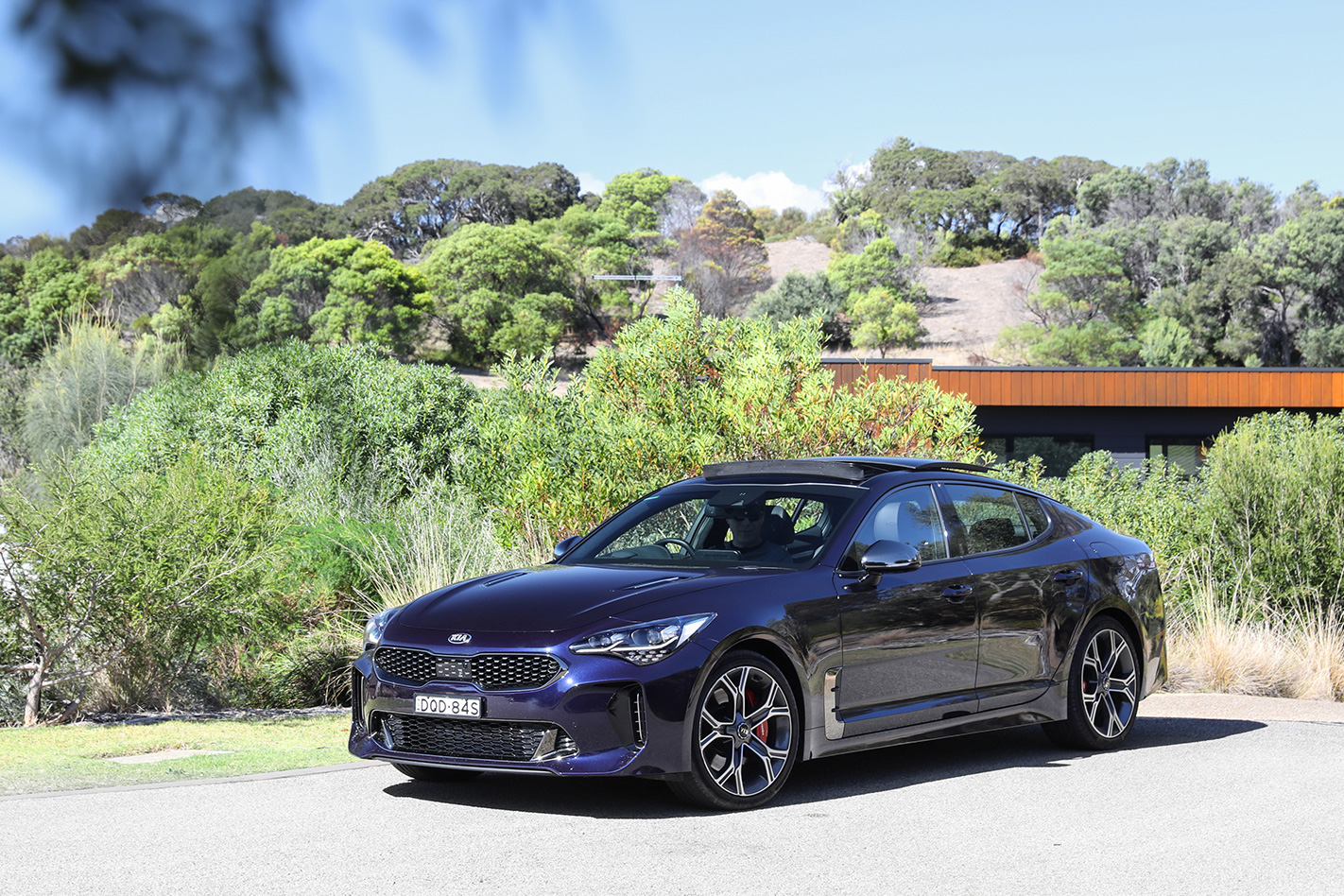
Not that I took the car for granted. There wasn’t a day when I didn’t smile when I started it up, grinning at the thought that for this serendipitous six-month spell, I had a 272kW rear-driver in the garage and some twisty country roads within five minutes of my front door. That said, it’s possible to become blasé about some of the Stinger’s lesser-appreciated qualities.
The biggest surprise for me was how adept the Kia was as a refined GT car. Through a fluke of timing, the Stinger arrived just as the Aussie-built Commodore V8 was bowing out, so it was only natural that the GT would be seen as the inheritor of the mantle; the lucky country’s ball-tearing sedan of choice. It can bag up the rears with the best of ’em but, if anything, the Stinger GT does what Commodores of old used to do so well, namely click over big distances in effortless comfort but with plenty of potency in reserve.

Dial the dampers to their softest mode, switch the drive mode to Eco, flick the active cruise and lane-keep on, chuck your mobile onto the wireless charging pad, pull up a favourite playlist on Android Auto and then tune that perfect balance between climate control and seat heaters/coolers. Australia then becomes this gently scrolling Pantone palette of browns; a slowly morphing box-set of weathered geologies.
Thus engaged, I saw a tankful of fuel go past in a 600km round trip between Melbourne and the New South Wales border at a rate of little over 7L/100km, contributing to an overall fuel economy figure over six months of 9.9L/100km, bettering Kia’s combined figure of 10.2L/100km. If you’re concerned that the Stinger V6’s fuel thirst will be prohibitive, rest easy..
Because it seemed so well suited to loping cruises, I never really felt tempted to exercise it at a track day. Besides, I’d already seen one pair of rear tyres cremated in about two-minutes of overexcitement and was determined to demonstrate some kind of responsible adulting and return the car with some semblance of tread on the back tyres. Or at least no visible canvas. On the one occasion that I did decide to go berserk on a wet roundabout, the Stinger instantly threw a tyre pressure warning at me, quickly curtailing the oversteer antics.
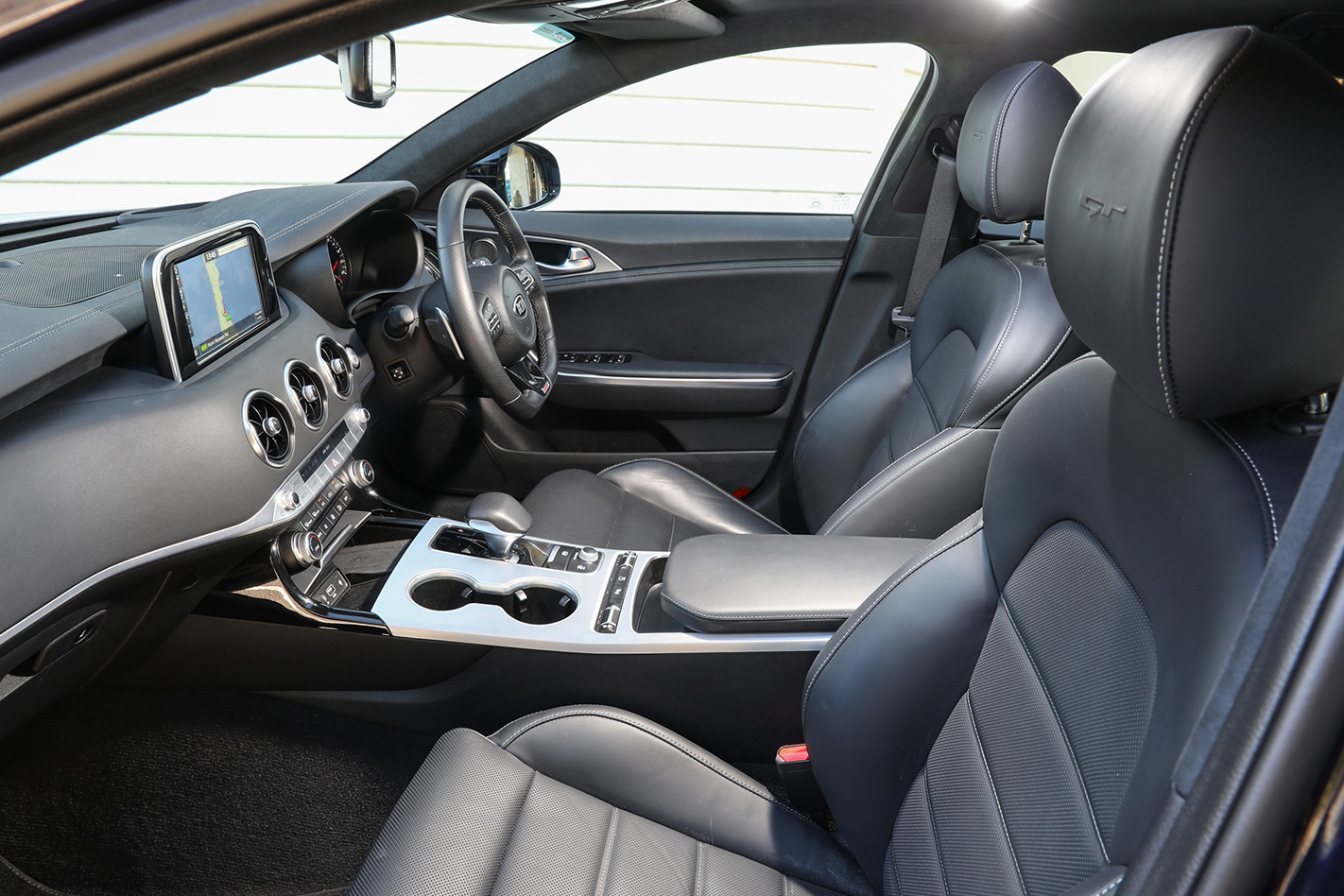
All too often these long term tests read like a litany of petty gripes. We try to bring you our real-world experiences of cars once the showroom sheen wears off and that can manifest as the worst sort of nitpicking. In the case of the Stinger, here’s a car that’s big, comfortable, quick, practical and which needn’t cost a fortune to run. Best of all it’s likeable. You want to turn down the air con, dial up the heated seats, change drive modes or switch off the stability control? There are big buttons and switches in easy reach. You don’t like idle-stop? Kill it once in a menu and it never reintervenes. All these things get the big Kia onside. You feel it’s been designed by people like you.
As the Stinger departs, its place in the Enright garage has been replaced by something broader and brasher, which you’ll be able to read about next month. It’ll have some big boots to fill.
